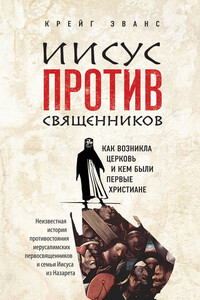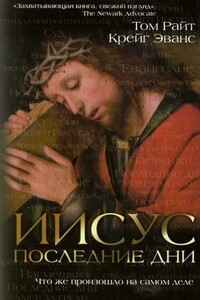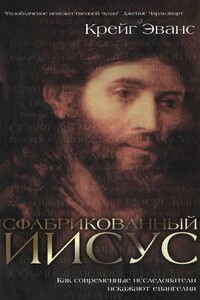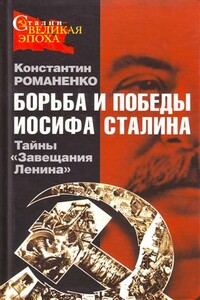Иисус и его мир. Новейшие открытия - страница 81
>21 О данной надписи см. Jozef Tadeusz Milik, “Trois tombeaux juifs recemment decouverts au Sud-Est de Jerusalem”, LA 7 (1956–1957), pp. 232–267, о ней: с. 235–239 + рис. 2 т. 3; Joseph A. Fitzmyer, “The Aramaic Qorban Inscription from Jebel Hallet et-Turi and Mk 7:11 /Mt 15:5”, JBL 78 (1959), pp. 60–65.
>22 Об открытии и анализе содержимого так называемой Гробницы плащаницы см. Mark Spigelman, “The Jerusalem Shroud: A Second Temple Burial Answers Modern Medical Questions”, Bulletin of the Anglo-Israel Archaeological Society 24 (2006), p. 127; Gibson, The Final Days of Jesus, pp. 138–147.
>23 О медицинском исследовании костных останков из Гробницы Каиафы см. Joe Zias, «Human Skeletal Remains from the “Caiaphas” Tomb», Atiqot 21 (1992), pp. 78–80.
>24 О Гробнице Ясона см. Levi Yizhaq Rahmani, “Jason’s Tomb”, IEJ 17 (1967), pp. 61-100.
>25 Свежий обзор свидетельств о продолжительности жизни евреев в эпоху поздней античности см. Yossi Nagar and Hagit Torgee, “Biological Characteristics of Jewish Burial in the Hellenistic and Early Roman Periods”, IEJ 53 (2003), pp. 164–171.
>1 Вводные материалы относительно иудейского обычая ossilegium см. Eric M. Meyers, Jewish Ossuaries: Reburial and Rebirth (BibOr 24; Rome: Pontifical Biblical Institute, 1971); Craig A. Evans, Jesus and the Ossuaries: What Jewish Burial Practices Reveal about the Beginning of Christianity (Waco, TX: Baylor University Press, 2003); Byron R. McCane, Roll Back the Stone: Death and Burial in the World of Jesus (Harrisburg, PA: Trinity Press International, 2003).
>2 Подробное рассмотрение кумранских текстов о распятии см. Gregory L. Doudna, 4QPesher Nahum: A Critical Edition (JSPSup 35; CIS 8; London and New York: Sheffield Academic Press, 2001), pp. 389–433; Yigael Yadin, The Temple Scroll (3 vols, Jerusalem: Israel Exploration Society, 1977–1983), pp. 2:288–291.
>3 Ряд исследований, посвященных данной находке, см. Yigael Yadin, “Epigraphy and Crucifixion”, IEJ 23 (1973), pp. 18–22 + plate; Joe Zias and Eliezer Sekeles, “The Crucified Man from Giv‘at ha-Mivtar: A Reappraisal”, IEJ 35 (1985), pp. 22–27; Joe Zias and James H. Charlesworth, “Crucifixion: Archaeology, Jesus, and the Dead Sea Scrolls”, in James H. Charlesworth (ed.), Jesus and the Dead Sea Scrolls (ABRL; New York: Doubleday, 1992), pp. 273–289 + plates. По вопросу о том, была ли кость повреждена до смерти или после, см. Norman J. Sauer, “The Timing of Injuries and Manner of Death: Distinguishing among Antemortem, Perimortem and
Postmortem Trauma”, in Kathleen J. Reichs (ed.), Forensic Osteology: Advances in the Identification of Human Remains (2nd edn, Springfield, IL: Charles C. Thomas, 1998), pp. 321–332.
>4 Относительно останков обезглавленной женщины (или мужчины) см. N. Haas, “Anthropological Observations on the Skeletal Remains from Giv‘at ha-Mivtar”, IEJ 20 (1970), pp. 38–59; Joe Zias, “Anthropological Evidence of Interpersonal Violence in First-Century A. D.Jerusalem”, Current Anthropology 24 (1983), pp. 233–234; Patricia Smith, “The Human Skeletal Remains from the Abba Cave”, IEJ 27 (1977), pp. 121–124.
>5 Мнение том, что это акт насилия, а не казнь, см. Zias, “Anthropological Evidence of Interpersonal Violence”, pp. 123–124.
>6 Относительно костных останков в Таутоне см. V. Fiorato, A. Boyl-ston and C. Knusel (eds), Blood Red Roses: The Archaeology of a Mass Grave from the Battle of Towton AD 1461 (Oxford: Oxbow, 2000).
>7 Мнение, согласно которому недостаток свидетельств о погребении казненных позволяет предположить, что Иисус не был погребен, см. John Dominic Crossan, Who Killed Jesus? Exposing the Roots of Anti-Semitism in the Gospel Story of the Death of Jesus (San Francisco: HarperCollins, 1995), pp. 160–188.
>8 О погребении у римлян см. Jocelyn M. C. Toynbee, Death and Burial in the Roman World (Ithaca, NY: Cornell University Press, 1971).
>9 О монументальных гробницах см. Janos Fedak, Monumental Tombs of the Hellenistic Age: A Study of Selected Tombs from the pre-Classical to the Early Imperial Era




